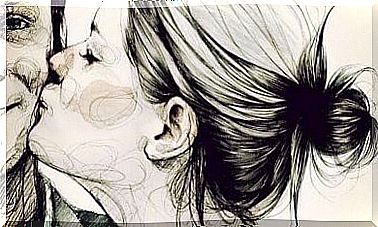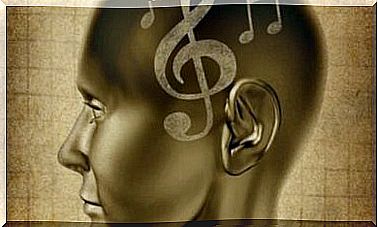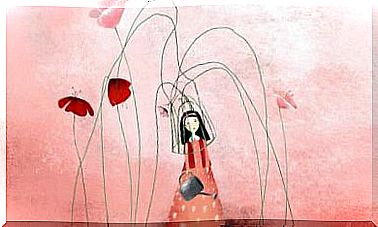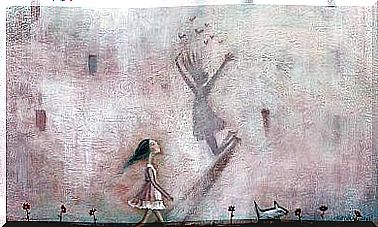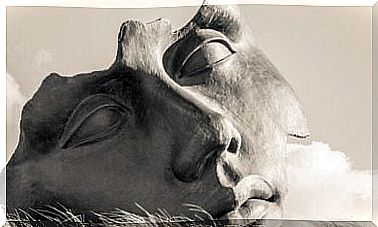The Main Theories About Emotion
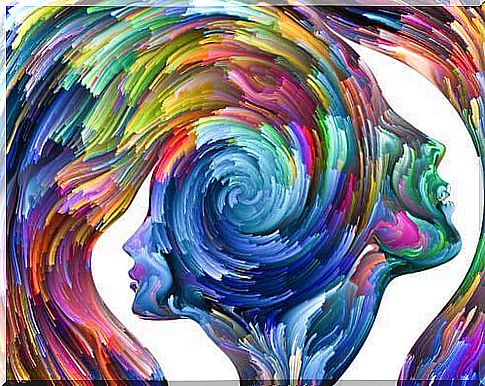
Emotion is a complex psychophysiological experience that we experience as a result of our interactions with the environment. In this article, we will learn about the main theories about emotion. That is, let’s see the different ways that psychology has to explain these human experiences.
From the point of view of psychology, emotion is a complex state of feelings that results in physical and psychological changes in the body that in turn influence thinking and behavior.
The ability to be emotional is related to a wide variety of psychological phenomena that include temperament, personality, mood and motivation.
According to David G. Meyers, professor of psychology at Hope College in Michigan, USA, and author of nearly two dozen books, human emotion implies “physiological arousal, expressive behaviors and a conscious experience”.
Among the theories about emotion, there are emotions of two valences: positive and negative. These emotions can be related to an object, a memory, a prediction, etc. Some emotions have, according to the theories, an innate physiological programming, being universal.
Universal emotions would be happiness, love, care, surprise, anger and fear. They are known as primary emotions. Secondary emotions are those that we learn only through our experience, such as pride, shame, sympathy, terror, neglect, etc.
Next, we’ll talk about some of the theories about emotion to understand the evolution of knowledge about emotional experience, something so human.
Theories about emotion
Emotions exert a very powerful force on behavior. But why do we feel emotions? What makes us have feelings? Researchers, philosophers and psychologists have proposed different theories to explain how and why emotions exist.

The main theories about emotion can be grouped into three different categories:
- Physiological theories propose that responses within the body are responsible for emotions.
- Neurological theories argue that activity within the brain leads to emotional responses.
- Cognitive theories suggest that thoughts and other mental activities play a central role in shaping emotions.
Evolutionary Theory of Emotion
The evolutionary focus focuses on the historical context in which emotions developed in the human species – and in other animals as well. According to evolutionary theory about emotions, they exist because they are adaptive. That is, they increase our chances of survival in the environment.
Thus, for example, fear can motivate us to respond more quickly to stimuli from the environment, which helps improve our chances of succeeding and surviving – and consequently of procreating and perpetuating our genes and our species.
It was Charles Darwin who proposed that emotions would have survived evolution because they are adaptive, and allow humans and other animals to survive and reproduce. The feelings of love and affection lead, for example, people to seek a relationship and reproduce.
Feelings of fear force people to fight, or even flee, with a source of danger. Identifying and understanding the emotions of others also plays a crucial role in a person’s safety and survival.
By being able to correctly interpret other people’s emotional manifestations, we can, for example, respond more accurately to sources of danger or sources of security and care.
James-Lange’s Theory of Emotion
The James-Lange theory of emotion was independently proposed by these two scholars, William James and Carl Lange. This theory suggests that emotions occur as a result of physiological reactions we have to events that happen to us.
Thus, as we go through different situations, our nervous system generates physical reactions to these events. The emotional reaction would depend on how these physical reactions are interpreted by cognition.
Examples of these reactions would be an increased heart rate, tremors, stomach pain, etc. Faced with these physical reactions, in turn, emotional reactions are generated, such as anger, fear and sadness.
Cannon-Bard’s Theory of Emotion
The Cannon-Bard theory of emotion was developed by the two physiologists Walter Cannon and Philip Bard. Walter Cannon did not agree with the James-Lange theory of emotion in several respects.
Cannon suggested that people can experience physiological reactions that are commonly linked to emotions – like a racing heart is linked to fear – without actually feeling that emotion.
He also suggested that emotional responses occur too quickly for them to be simply a product of physical states. Cannon first proposed his theory in the 1920s, and his work was later expanded by fellow physiologist Philip Bard during the 1930s.
According to Cannon and Bard’s theory of emotion, we feel emotions and experience physiological reactions—such as sweating, trembling, and muscle tension—at the same time.
More specifically, this theory suggests that emotions are produced when the thalamus – the part of our brain that is part of processing emotions – sends a message to the brain in response to a stimulus. This results in a physiological reaction.
At the same time, the brain also receives signals that activate emotional experience. Cannon and Bard’s theory suggests that the physical and psychological experience of emotion occurs at the same time, not that one causes the other.

Schachter-Singer theory
The Schachter-Singer theory of emotion was developed by Stanley Schachter and Jerome E. Singer. According to this theory, the element of reason plays a major role in how we experience emotions.
Schachter and Singer’s theory is based on both the James-Lange theory and the Cannon-Bard theory of emotion. Like? As with the James-Lange theory, the Schachter and Singer theory proposes that people deduce emotion based on physiological responses.
So the situation is critical, but the interpretation people make of it and the responses it generates in the body is even more important.
The Schachter-Singer theory suggests that when an event generates physiological excitement, we try to find a reason for that excitement. Therefore, we experience and label the emotion.
As with the Cannon-Bard theory, this theory also suggests that similar physiological responses can generate different emotions.
Cognitive Assessment Theory
According to emotion assessment theories, thinking must occur first, that is, before feeling the emotion. Richard Lazarus was a pioneer in this area of study of emotion. This is why this theory is often known as the Lazarus theory of emotion.
According to this theory, the sequence of events involves first a stimulus, followed by a thought, which then leads to a simultaneous experience of a physiological response and an emotion.
For example, if you encounter a bear in the woods, you may immediately begin to think that it is in danger. This leads to an emotional experience of fear, and the physical reactions associated with this response are fight or run.
Emotion theory of facial feedback
The facial feedback theory states that facial movement can influence your emotional experience. Supporters of this theory suggest that emotions are directly related to changes in facial muscles.
For example, a person could improve their mood simply by smiling. Likewise, she could make it worse by frowning. In other words, the most surprising consequence of this theory is that it tells us that we can generate emotions simply by manipulating our faces.
This can be done at any time voluntarily, reproducing the most characteristic expressions of emotions when they occur involuntarily.
We can see that these theories do not necessarily eliminate the others, and can be combined. Charles Darwin was one of the first to suggest that physiological changes caused by an emotion would have a direct impact on the emotion, rather than just being a consequence of it.
Following this idea, William James proposed that, contrary to common belief, awareness of bodily changes triggered by a stimulus is what emotion would be.
Thus, if we did not feel bodily changes, there would only be an intellectual thought devoid of any feeling or emotion. Is this possible?
